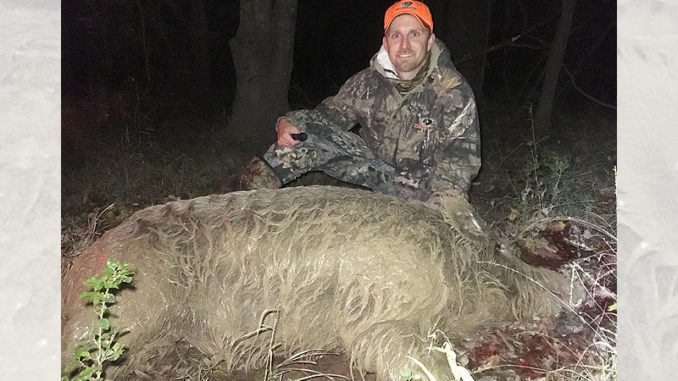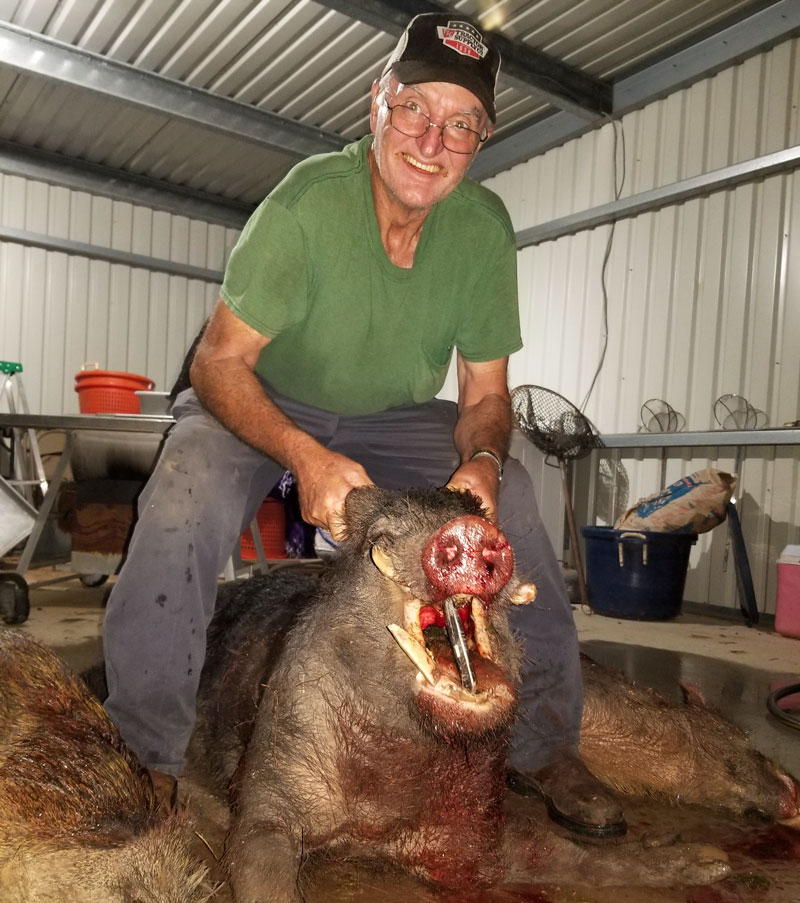
Before the 2019 turkey season started in Louisiana, Cody Cedotal, wild turkey program manager for the Louisiana Dept. of Wildlife and Fisheries, predicted a slightly better season than last year. But for many hunters, the season was much worse.
Could wild hogs be the reason for the low success rate of these turkey hunters? According to the the Louisiana Dept. of Agriculture and Forestry, hogs contribute to lowering turkey populations in a variety of ways. They say wild hogs compete with turkeys and other wildlife for the same food sources, but also by eating the eggs of ground-nesting birds like turkeys.
Wild hogs are the most adaptable animals in Louisiana. They can not only live, but thrive, in any environment and under any conditions. Aside from eating turkey eggs and the same food that turkeys eat, wild hogs also destroy mature crops and uproot hayfields. This removes food from other animals, spoils food and takes away nesting and breeding sites.
Wild hogs outnumber turkeys 14 to 1
And wild hogs far outnumber wild turkeys in the state. Cedotal said Louisiana’s statewide turkey population is between 50,000 to 60,000. Wild hogs, which are present in all 64 parishes, number around 700,000.
For turkeys, breeding is a delicate process that requires certain conditions. Bad weather can wreak havoc on not just individual turkeys, but on whole year-classes. Their eggs and hatchlings — if they make it that far — must make it past a number of predators including foxes, raccoons, and wild hogs.
Hogs, on the other hand, reproduce early and often. At 6 months, swine can begin reproducing, and most females have at least two litters per year; they average six piglets per litter. So in a year’s time, 12 new pigs are added for every breeding-age sow. That’s an astounding number.
Population explosion
Because of the high reproductive rate of wild hogs, the LDWF has determined that hunters must harvest 75 percent of the current swine population each year just to keep the numbers in check. In other words, the annual wild-hog harvest we would have to be 525,000 wild hogs, just to keep the population at 700,000!

Hunters have put forth a good effort but haven’t come close to that number in any recent years. In 2014-2015, Louisiana hunters killed 299,500 wild hogs. That number dropped to 172,300 in 2015-2016, and it dropped even more in 2016-2017, when hunters harvested 130,600 swine. While these number do not include numbers killed by professional trappers, farmers, and the agency, it still represents why it’s so difficult to get wild hog numbers under control.
Voracious eaters
Hogs have a voracious appetite. A recent study of five immature sows captured, collared, then released and tracked in East Feliciana Parish showed that pigs gained an average of nine pounds per month. Their home ranges were between 6 and 10 square miles, so they cover a lot of ground, giving them the potential to encounter multiple nesting sites for turkeys.
Hunters can help by shooting, trapping or hunting hogs with dogs. Night-hunting is legal on private land from March 1 through Aug. 31. Trapping with cages is the most-effective means of control, as each trap can attract and hold multiple hogs day after day. Consult the Louisiana Hunting Regulations Guide for complete information.
